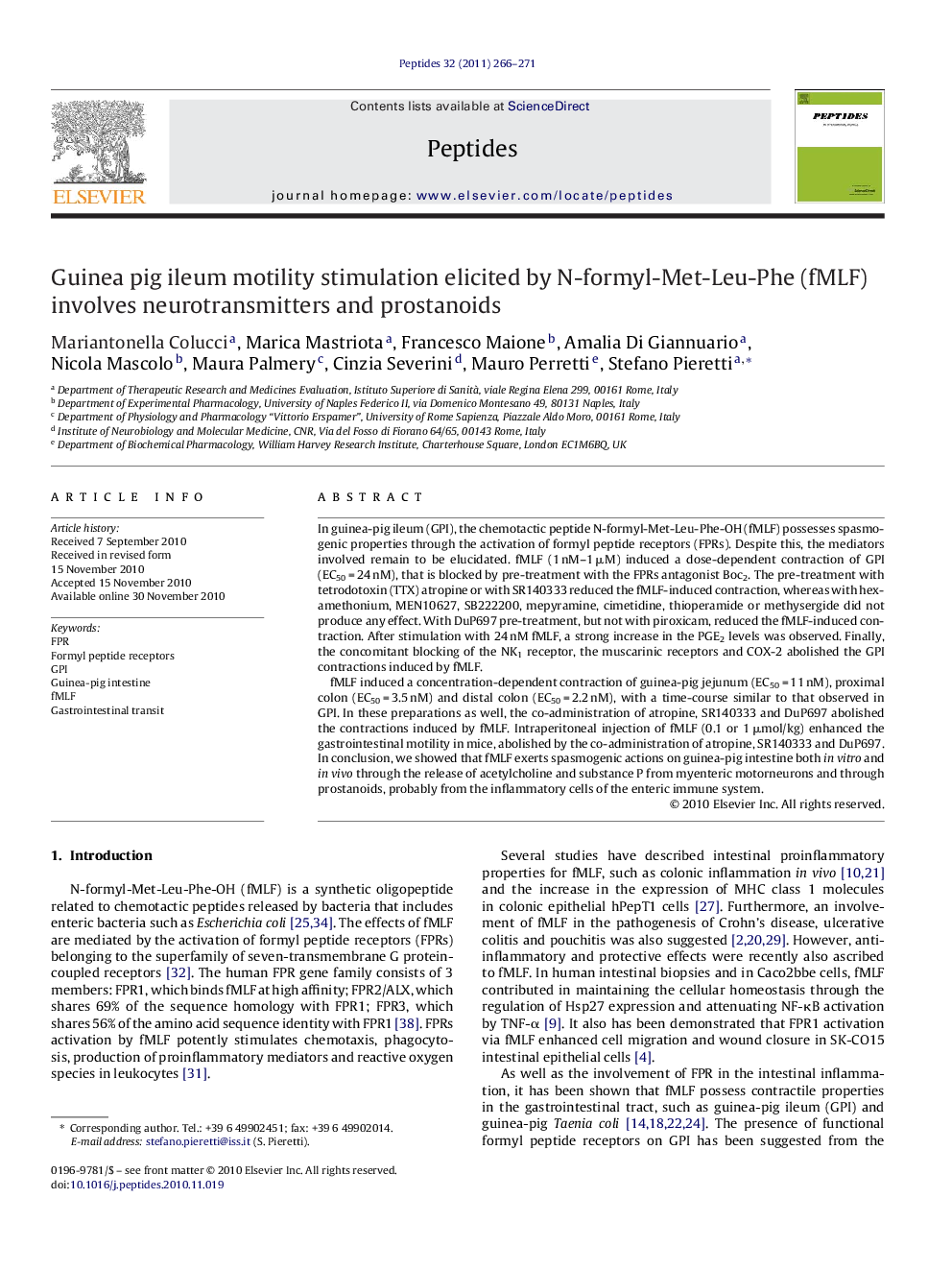| Article ID | Journal | Published Year | Pages | File Type |
|---|---|---|---|---|
| 2006584 | Peptides | 2011 | 6 Pages |
In guinea-pig ileum (GPI), the chemotactic peptide N-formyl-Met-Leu-Phe-OH (fMLF) possesses spasmogenic properties through the activation of formyl peptide receptors (FPRs). Despite this, the mediators involved remain to be elucidated. fMLF (1 nM–1 μM) induced a dose-dependent contraction of GPI (EC50 = 24 nM), that is blocked by pre-treatment with the FPRs antagonist Boc2. The pre-treatment with tetrodotoxin (TTX) atropine or with SR140333 reduced the fMLF-induced contraction, whereas with hexamethonium, MEN10627, SB222200, mepyramine, cimetidine, thioperamide or methysergide did not produce any effect. With DuP697 pre-treatment, but not with piroxicam, reduced the fMLF-induced contraction. After stimulation with 24 nM fMLF, a strong increase in the PGE2 levels was observed. Finally, the concomitant blocking of the NK1 receptor, the muscarinic receptors and COX-2 abolished the GPI contractions induced by fMLF.fMLF induced a concentration-dependent contraction of guinea-pig jejunum (EC50 = 11 nM), proximal colon (EC50 = 3.5 nM) and distal colon (EC50 = 2.2 nM), with a time-course similar to that observed in GPI. In these preparations as well, the co-administration of atropine, SR140333 and DuP697 abolished the contractions induced by fMLF. Intraperitoneal injection of fMLF (0.1 or 1 μmol/kg) enhanced the gastrointestinal motility in mice, abolished by the co-administration of atropine, SR140333 and DuP697. In conclusion, we showed that fMLF exerts spasmogenic actions on guinea-pig intestine both in vitro and in vivo through the release of acetylcholine and substance P from myenteric motorneurons and through prostanoids, probably from the inflammatory cells of the enteric immune system.
Graphical abstractFigure optionsDownload full-size imageDownload as PowerPoint slideResearch highlights▶ The formyl peptide receptor agonist N-formyl-Met-Leu-Phe-OH (fMLF) induces a dose-dependent contraction of guinea pig ileum (GPI). ▶ fMLF contracts GPI through the release of the excitatory neurotransmitters acetylcholine and substance P from myenteric motorneurons. ▶ fMLF also induces the release of prostanoids such as PGE2 probably from inflammatory cells that are in close proximity to the myenteric plexus and intestinal smooth muscle cells.
